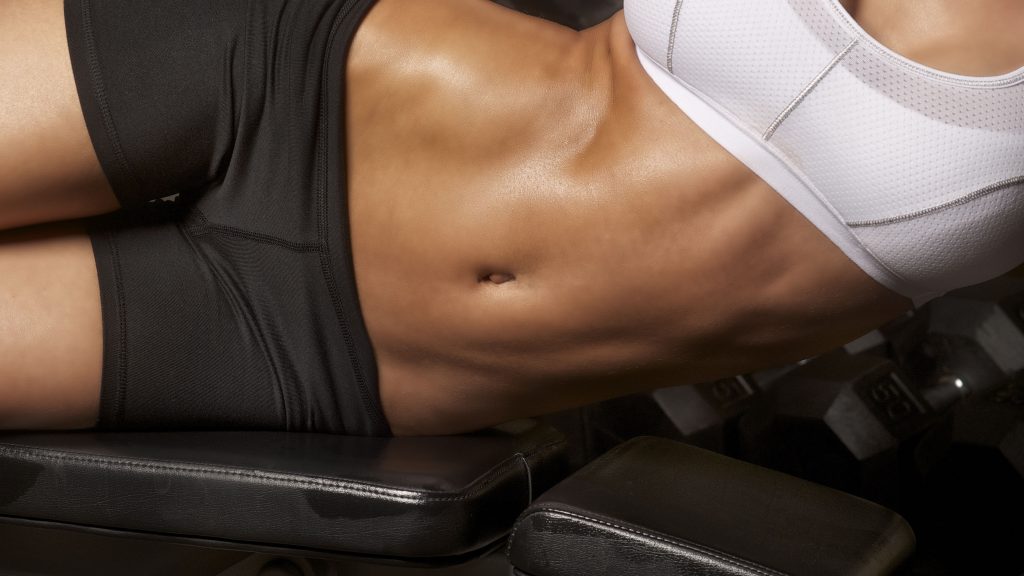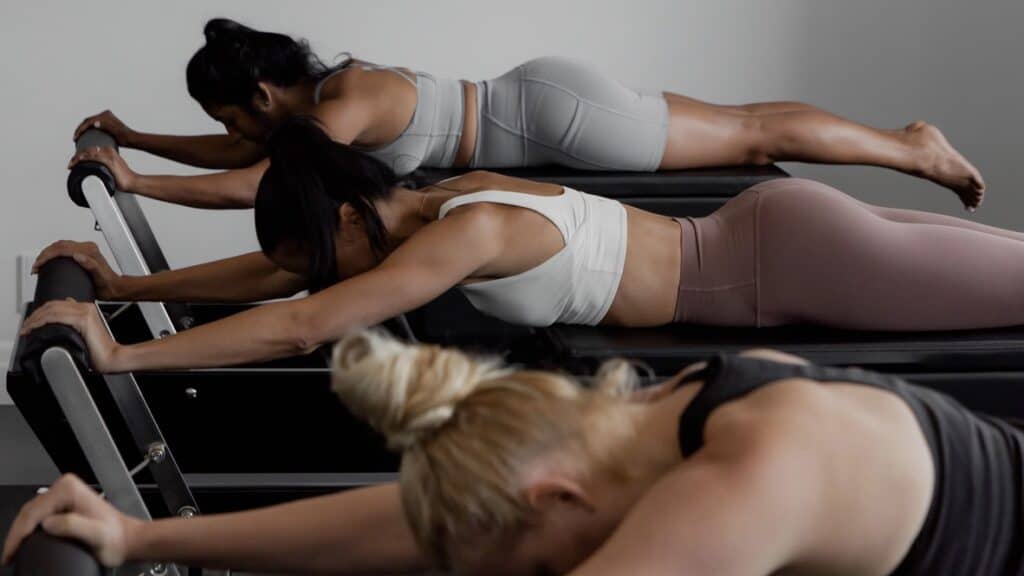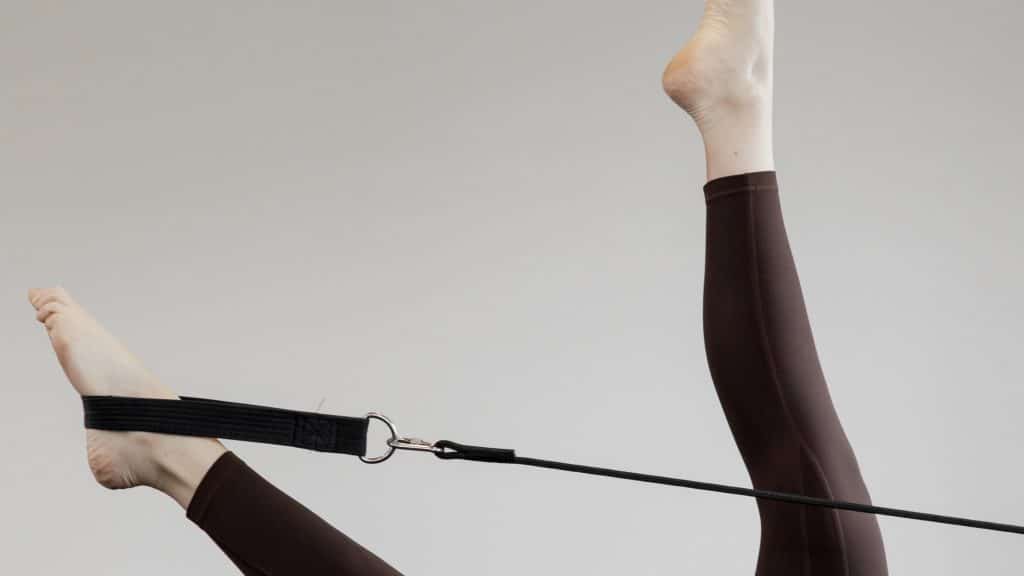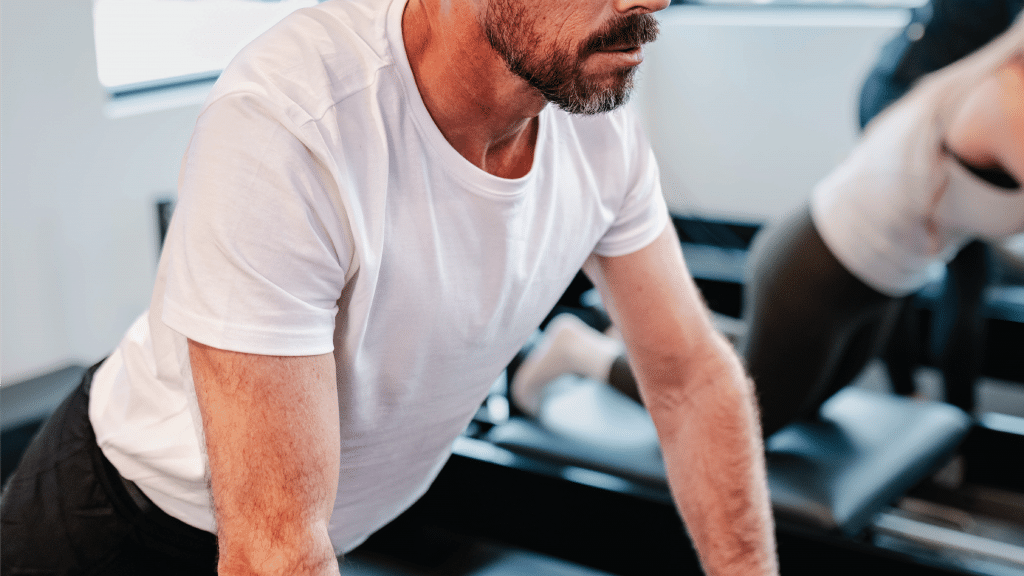The secret to effective core training and gaining a flat stomach is to target and train the Transversus Abdominis. Without specifically targeting this muscle, the abdominal wall will continue to protrude outwards, meaning that even if you do a large number of other abdominal exercises such as sit-ups, your core will lack strength.
Some facts about the ‘Core Muscles’:
Where is the Transversus Abdominus?
Let’s start from the outside and work inwards….
The Rectus Abdominus:
This is the least functional but most trained of all the abdominal muscles as they are your traditional ‘six pack muscles’. Their role is to flex or bend the spine forward in a ‘sit up’ type action and that’s about it. The rectus abdominus plays a very small role in core stabilisation and they go from the ribcage below the chest to the pubic bone.
Internal and External Obliques:
These muscles rotate the torso so they are quite functional and they help to improve the tennis or the golf game. They also play a small role in stabilising the spine and aid in a small amount to overall core stabilisation and strength. These muscles are either side of the rectus abdominus and extend over the ribs. They will help – in conjunction with the T.A. – to draw in the waist.
Transversus Abdominis: (T.A.):
The Transversus Abdominus is the deepest yet most important layer of stomach muscle yet it’s the least trained. The T.A.’s role is to flatten the abdominal wall and also to stabilise the spine as it’s the only stomach muscle to actually attach onto each of the lower vertebrae. Because of this reason, strengthening this muscle helps to reduce back pain and decrease the risk of injuring the lower back.
It’s also the main core stabilising muscle and it works closely with the pelvic floor. Whilst you can’t visually see the T.A., it’s vital in flattening and toning the stomach.
The Pelvic Floor:
The pelvic floor aids in the TA in providing core and pelvic stability.
The pelvic floor can often be weakened in females by events such as childbirth and in extreme cases a female can suffer from a pelvic floor prolapse which may or may not need surgery to repair. The most common symptom of pelvic floor weakness is stress incontinence which is the passing of a small amount of urine when sneezing or coughing etc.
How do I train my T.A. and pelvic floor?
To activate the transversus abdominus and pelvic floor, simply lie on your back with your feet on the floor and your knees bent. Find the front of your hip bones (the part that’s pointing up towards the ceiling) and place your fingers on the hip bones. Next, simply roll the finger tips over these bones onto the inside of the hips so your finger tips are just one centimetre inside the bone. Apply some downward pressure on your fingers but you should be still touching the hip bones.
Now imagine you have a letter ‘T’ drawn on the surface of the stomach with the vertical line of the T starting at the pubic bone and going upwards towards the belly button. The horizontal axis of the T goes from one hip bone to the other. This is what we catch phrase as the ‘T-zone’ at Studio Pilates International® to aid in imagery, memory and streamlining communication. Let’s focus first on the vertical axis of the ‘T’ which is the pelvic floor.
Now engage the pelvic floor by imagining you are stopping the flow of urine midstream, drawing the deep muscles upwards and inwards whilst simultaneously constricting the muscles deep in the back passage (the rectum) as if you are preventing breaking wind. You should hopefully feel the pelvic floor tighten and some very slight tension in the muscles right on the inside of the hip bones.
Once this activation of the pelvic floor is mastered, then recruit the transversus abdominis as well.
Then, whilst holding the pelvic floor on, imagine that horizontal line on the surface of the stomach that connects the hip bones together and focus on flattening that imaginary line and drawing it downwards towards the spine. You can also imagine the hip bones towards each other (without sucking in the stomach or lifting the rib cage upwards).
In addition to this you may also like to think of drawing the navel to the spine but the contraction is based below the navel more, in between the hip bones. You should feel just a small amount of tension in the muscles just inside the hip bones under your finger-tips. This is the pelvic floor and transversus abdominis working together and activating.
If you keep the pressure on the fingers and release the stomach muscles quickly you should feel the tension in the stomach under the finger-tips release. Repeat the activation of these two muscles until you master it.
You are trying to keep all of the other stomach muscles relaxed at this stage as we are just focused on isolation and activation. Once you have mastered this and strengthened these muscles by building up your endurance, you can then simply progress to trying to hold the activation of these muscles whilst doing increasingly challenging exercises and really making the most of your core training. Often it’s just a matter of taking one step backwards to take ten steps forwards.
It’s important to note that when you begin to curl the upper body up off the floor in a sit up type motion and you start to use some of the other stomach muscles such as the rectus abdominis and obliques, the stomach will want to bulge outwards. You should be always focussed on flattening the imaginary line on the surface of the stomach towards the spine and preventing this bulging from occurring. Only ever curl up as high as you can maintain a totally flat stomach otherwise you will be defeating the purpose of your core training and you will be teaching your abs to stick outwards.
Once you’ve learned how to isolate and activate your TA, you’re ready to engage it with other abdominal muscles! Try a Reformer Pilates workout with Studio Pilates International, for an overall body workout that focuses on maintaining core strength.






